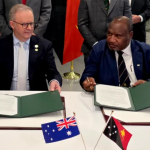When we talk about spacefaring nations, giants like the USA, Russia, and China typically dominate the discourse. However, in recent years, Singapore, a tiny Southeast Asian nation, has been making strides in the aerospace sector, demonstrating that passion and innovation can overcome size constraints. Let’s take a journey through Singapore’s achievements in space.
1. Establishing the Office for Space Technology and Industry (OSTIn):
- Overview: In 2013, Singapore announced the formation of OSTIn under the Economic Development Board. Its aim is to leverage space industry developments to foster economic growth.
- Significance: This move showcased Singapore’s dedication to tapping into the multi-billion-dollar global space industry, focusing on satellite engineering, services, and applications.
2. Satellite Innovations:
- Overview: Several Singapore-based firms and institutions have developed advanced satellites.
- X-SAT: Launched in 2011, this was Singapore’s first locally-built satellite, a result of collaboration between Nanyang Technological University (NTU) and DSO National Laboratories.
- VELOX-CI: Another NTU endeavor, this satellite was designed to test advanced satellite components in space.
- Significance: These satellite projects highlight Singapore’s capabilities in space technology and its potential to contribute to international space research and commercial satellite solutions.
3. Aerospace Education & Research:
- Overview: Singaporean institutions have shown a keen interest in aerospace research and education.
- SSTA: The Singapore Space and Technology Association promotes space education and develops space engineering competency in the country.
- Local Universities: NTU and the National University of Singapore (NUS) have specialized programs and initiatives focused on satellite technology and space research.
- Significance: A foundation in aerospace education ensures a skilled workforce for future space endeavors.
4. Hosting Global Space and Technology Convention (GSTC):
- Overview: Since 2008, Singapore has been hosting the GSTC annually, gathering space industry leaders, professionals, researchers, and businesses to discuss trends, innovations, and collaborations.
- Significance: Hosting such an event reinforces Singapore’s position as a hub for space technology in Asia and boosts its aerospace credentials on the global stage.
5. Partnerships and Collaborations:
- Overview: Singapore has engaged in multiple collaborations to further its space ambitions.
- Inmarsat: In 2019, the British satellite operator chose Singapore as its satellite launch and manufacturing base in partnership with local companies.
- International Partnerships: The nation has been actively exploring collaborations with countries like France, the USA, and Israel for space and satellite projects.
- Significance: These collaborations not only bring technological expertise to Singapore but also expand its reach and influence in the global space community.
Conclusion:
Singapore’s journey in the aerospace sector exemplifies its visionary approach. By investing in education, fostering collaborations, and championing innovations, this small nation has positioned itself as a key player in the rapidly growing Asian space industry. As the space race heats up worldwide, watch out for Singapore – a tiny red dot with outsize ambitions, ready to leave its mark among the stars. Also learn about India’s Lunar Rover Embarks on Moon Exploration.










